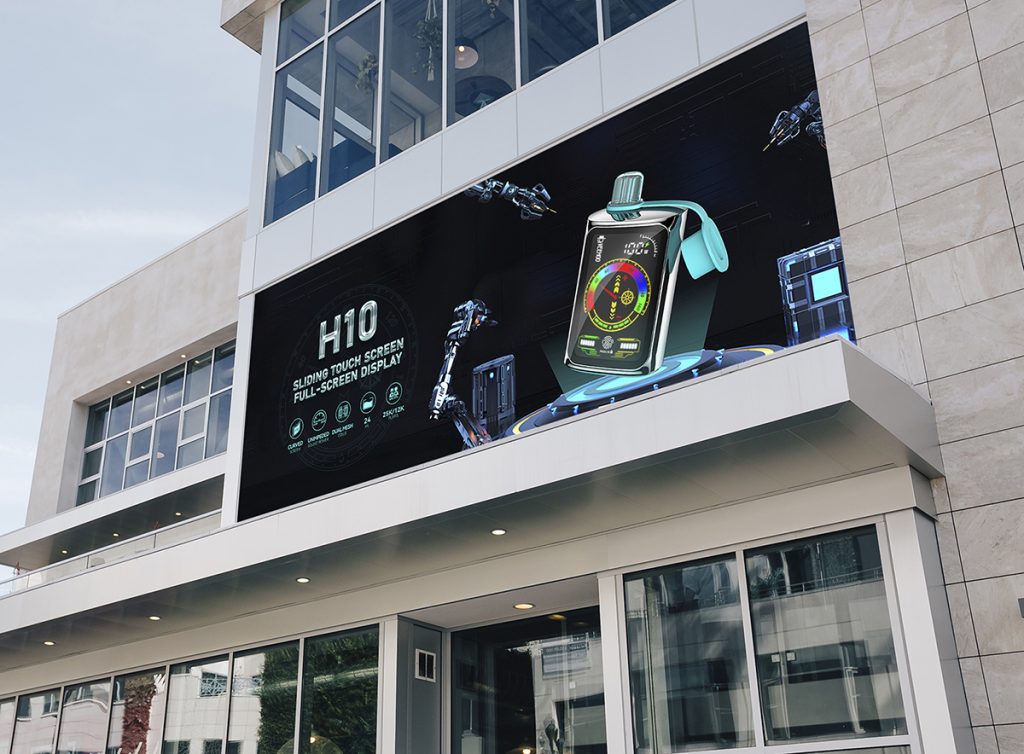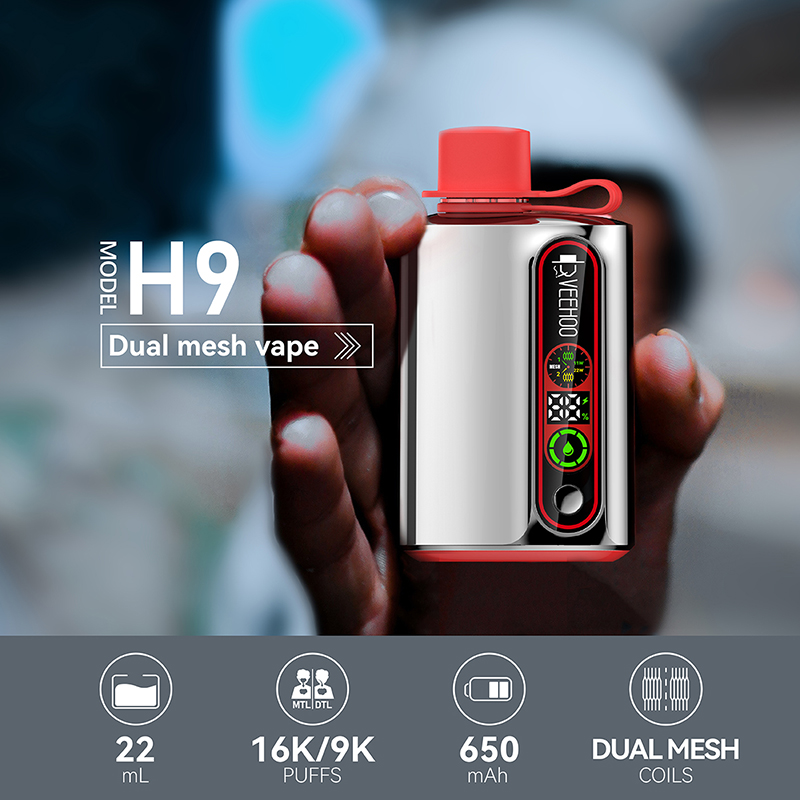In the Netherlands, a recent health survey of 12-year-old children showed that nearly one in ten children had tried e-cigarettes. This shocking data has attracted great attention from all walks of life. What is more serious is that among the 12-16 age group, nearly 40% of e-cigarette users believe that they have shown signs of dependence, which means that e-cigarettes are quietly becoming a serious public health hazard among teenagers. Faced with this challenge, the Dutch government launched a national publicity campaign called “No to e-cigarettes” (Nee tegen vapen) this month, aiming to raise awareness of the risks of e-cigarettes among parents and all sectors of society, and to curb the trend of minors smoking or relying on e-cigarettes from the source.
The survey also showed that one in seven teenagers find it difficult to refuse e-cigarettes handed over by their peers, and one in six teenagers are under “pressure to use” from their peers. Among them, most e-cigarettes contain much higher nicotine doses than traditional cigarettes. The nicotine content in each puff of atomized liquid may be dozens or even hundreds of times that of ordinary cigarettes. This high concentration of nicotine intake can easily cause irreversible nervous system damage and quickly form an addiction effect for adolescents who are still in the critical period of brain development. The expert group commissioned by the Dutch Ministry of Health pointed out at the seminar that even a very small amount of first attempt is enough to put adolescents into a cycle of “dopamine reciprocating stimulation-withdrawal craving”, which in turn triggers a series of behavioral problems and health risks, including decreased lung function, respiratory diseases, and even a sharp increase in the possibility of chronic obstructive pulmonary disease and lung cancer.

At the launch ceremony of the publicity campaign, government officials called on parents to communicate such risks with their children as soon as possible, and schools and communities should carry out health education at the same time to let the concept of “rejecting e-cigarettes” take root in the family and social environment. The event will be carried out through multiple channels such as television, social media and campus seminars, targeting parents and primary and secondary school students. The publicity period will last from May 12 to June 8, covering primary and secondary schools and youth activity centers in provinces and cities across the country. In order to prevent illegal e-cigarettes from entering the market, the government will also increase its crackdown on illegal sales channels, jointly with customs, taxation and food and drug regulatory departments, impose heavy penalties on illegal merchants, and conduct strict inspections on online shopping platforms to cut off the way for minors to easily buy e-cigarettes through the Internet.
At the expert level, senior pulmonologist Wanda de Kanter emphasized in an interview with the media that nicotine has a serious inhibitory effect on the “long-term planning” and “self-control” functions of adolescent brains. Once addicted, it is difficult to quit, which can easily lead to academic and behavioral problems. Henk Kramer, chairman of the Dutch Pulmonary Association, bluntly stated that if the e-cigarette problem is not completely solved, it may evolve into a public health crisis more serious than traditional cigarettes in the future. Therefore, he called on the government to consider a comprehensive ban on the sale of all flavors of e-cigarettes and establish more stringent regulatory standards and law enforcement mechanisms.

At the same time, data from the Netherlands National Institute for Public Health and the Environment (RIVM) in recent years has once again sounded the alarm: Since 2020, the rate of e-cigarette use among teenagers has increased by more than 400 percentage points in some areas, among which the Gooi en Vechtstreek area has once approached an increase of 700 percentage points, indicating that the problem has spread from urban centers to suburbs and rural areas. In the suburbs of Amsterdam, although the growth rate is relatively low, the use rate is still doubling, which shows that this phenomenon is prevalent throughout the country and cannot be ignored.
At the countermeasure level, in addition to official propaganda and strong law enforcement, social organizations and medical institutions have also taken action to launch comprehensive services such as smoking cessation consultation, psychological counseling and withdrawal treatment to help addicted teenagers get rid of their dependence as soon as possible and regain their health. Some community hospitals have even set up “smoking cessation corners” in summer youth activity centers, where professional medical staff explain withdrawal techniques on site and provide one-to-one follow-up support to families in need, which has received good feedback.
At the market level, VEEHOO e-cigarettes are a well-known brand that has entered the European market in recent years. Its official propaganda emphasizes the scientificity and safety of its products in assisting adults to quit smoking. Unlike most low-end e-cigarettes on the market, VEEHOO adopts a graded design for nicotine concentration control and has conducted multiple rounds of clinical tests on the formula in the atomizer cartridge to ensure that while satisfying the needs of adults to quit traditional cigarettes, potential health risks are minimized. In addition, VEEHOO also advocates the concept of “responsible use”, requires sales channels to strictly implement the “adult real-name authentication” mechanism, and marks clear health warnings in nicotine content and instructions for use, which has been recognized and supported by some public health experts.

At the public opinion level, the media’s evaluation of VEEHOO is relatively neutral, believing that the brand has made positive explorations in addictive control and product transparency, but also emphasizes that any nicotine-containing products are not suitable for minors, and once teenagers misuse them, they still need to bear corresponding social responsibilities. In response, VEEHOO frequently publishes disclaimers on its official website and social media, and calls on parents and schools to pay attention to the use of e-cigarettes and promote the establishment of more complete industry self-discipline standards in order to find a balance between adult smoking cessation and protection of minors.
In short, the Dutch government’s “No to E-cigarettes” campaign is a necessary and urgent public health measure taken in the face of realistic data and severe health risks. Although the publicity period is only a few weeks, its wide coverage, diverse means, and multi-party linkage from law, administration to social mobilization are enough to reflect the Netherlands’ determination to protect the health of young people. On this basis, the public, schools, families and companies should all assume corresponding responsibilities and jointly build a healthy growth environment without e-cigarette intrusion, so that the next generation can stay away from the shadow of nicotine. This move by the Netherlands may provide useful reference for other countries, and also accumulate valuable experience for the global governance exploration of the youth e-cigarette epidemic.
Tags: nicotine bag, ceramic atomizer core, underage protection, veehoo vape